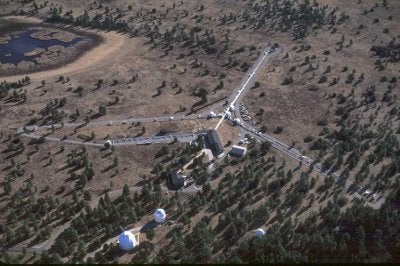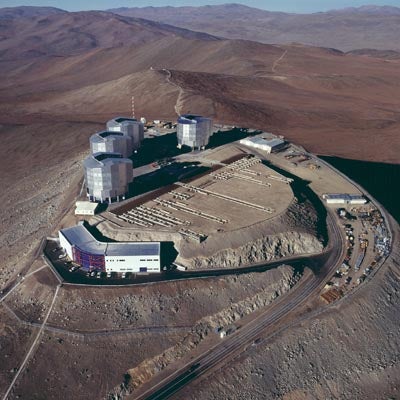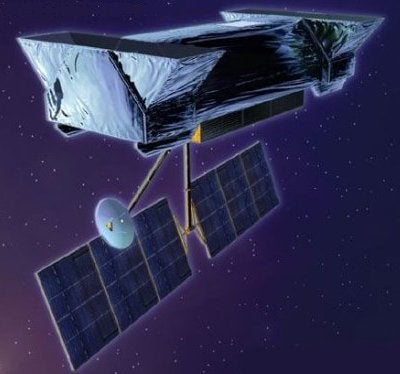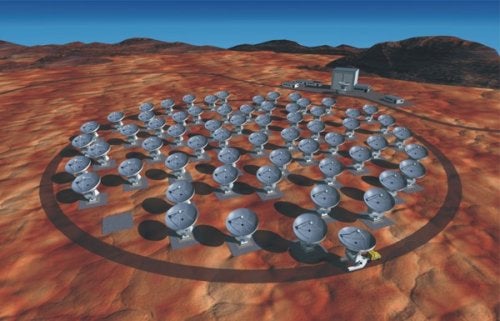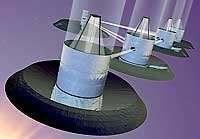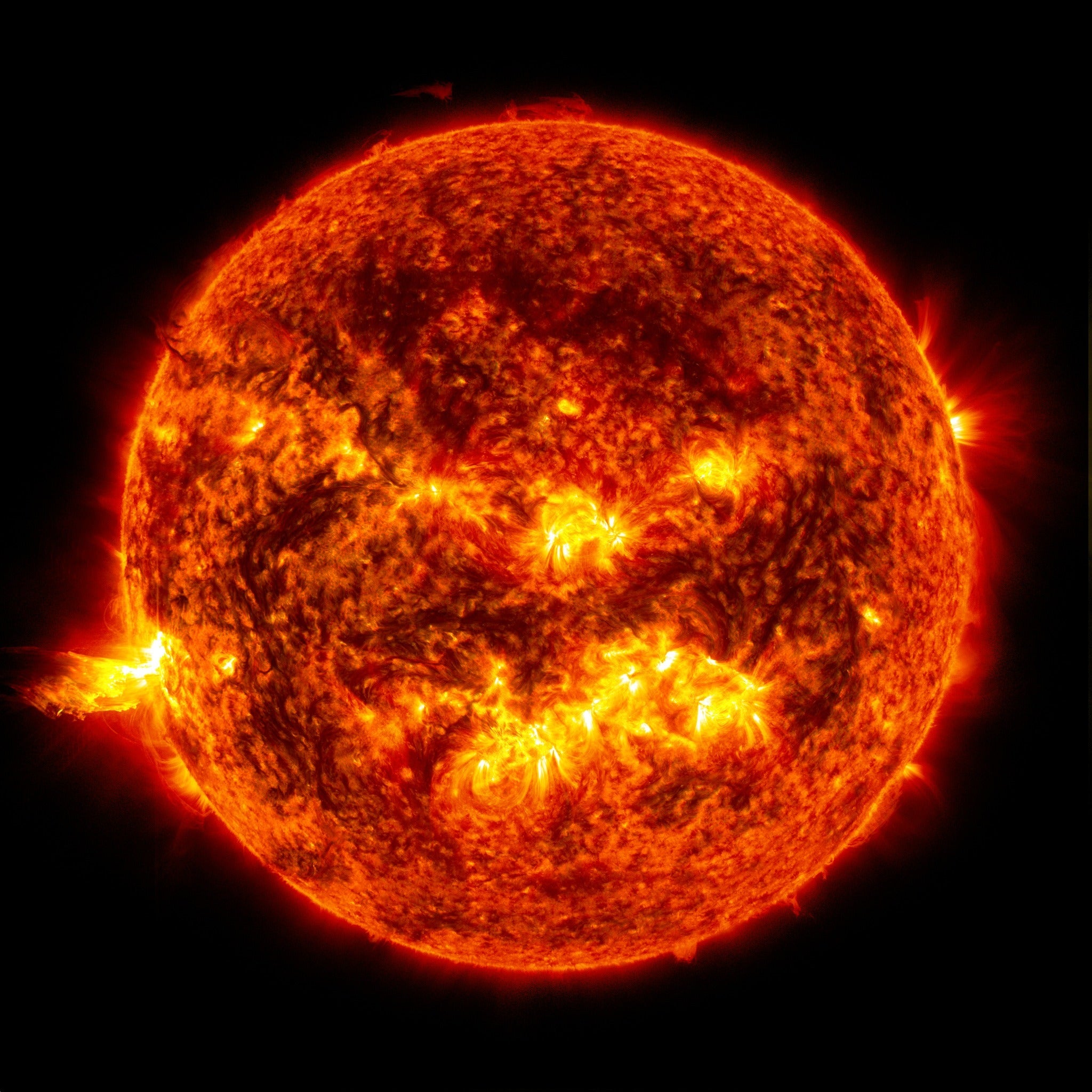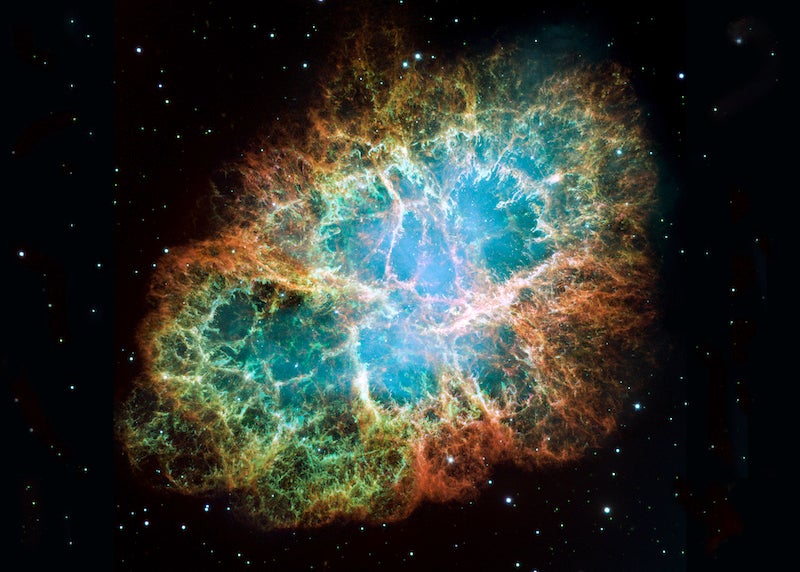One promising idea was to set up an array of multiple, smaller telescopes that, when linked, could imitate the resolving power of a single, large telescope equaling the size of the array’s diameter. Called spatial interferometry, the idea worked beautifully. Astronomers have benefited from this technique at observatories such as the Very Large Array (VLA) in New Mexico, the Infrared-Optical Telescope Array (IOTA) in Arizona, Sydney University Stellar Interferometer (SUSI) in Australia, and the Cambridge Optical Aperture Synthesis Telescope (COAST) in the United Kingdom. And the trend is catching on.
Many new interferometers are currently in the works — either on paper or actually under construction. Astronomy.com has compiled a list of just some of these future observatories to provide a preview of what’s to come in the field of astronomical interferometry.
Location: Anderson Mesa near Flagstaff, Arizona (United States)
Type of observations: Optical
Developed by: U.S. Naval Observatory, Naval Research Laboratory, and Lowell Observatory
Expected year of completion: 2004 (estimated)
Units: Six 50-centimeter siderostats
Baseline: Up to 437 meters
Under construction since September 1992 and already operational, the Navy Prototype Optical Interferometer (NPOI) is an array of six telescopes set up along three, 250-meter-long arms arranged in the shape of a widely spaced Y. The first successful observations were made in October 1994, but the NPOI is not yet able to take advantage of its full baseline. The NPOI has already helped astronomers study Cepheid variable stars such as Polaris, observe the orbit of the binary star Mizar A, and resolve the members of the triple-star Eta Virginis. Astronomers will continue using the NPOI to measure the diameters of stars, image stellar surfaces and circumstellar material, and measure binary separations with unprecedented resolution.
Location: Cerro Paranal in Chile
Type of observations: Optical and infrared
Developed by: European Southern Observatory
Expected year of completion: 2006
Units: Four 8.2-meter unit telescopes and four 1.8-meter auxiliary telescopes
Baseline: Up to 202 meters
The individual “unit” telescopes of the Very Large Telescope Interferometer have already made astronomical headlines with their solo observations of the cosmos. In September 2002, astronomers successfully combined the light from all four 8.2-meter telescopes for the first time. Mobile auxiliary telescopes, which will provide the interferometer’s versatility, still have to be added. Once complete, the VLTI will be the largest optical telescope. It will study a variety of subjects, including extrasolar planets, the Milky Way’s central black hole, low-mass stars and brown dwarfs, stellar surfaces, and active galactic nuclei. Given Mapuche names for the sun (Antu), moon (Kueyen), Southern Cross (Melipal), and Venus (Yepun), the four large telescopes will continue to work independently and together as a team when the interferometer is finished.
Location: Space
Type of observations: Optical
Developed by: NASA and Jet Propulsion Laboratory
Expected year of completion: 2009
Units: Six 0.3-meter siderostats
Baseline: 10 meters
The Space Interferometry Mission (SIM) spacecraft’s primary mission will be to perform astrometry. SIM will use three collinear interferometers (each with two siderostats) mounted to a 10-meter-long boom to determine the positions and distances of stars with microarcsecond precision — hundreds of times more accurately than any program before it. Thanks to this ability, it will be able to better determine distances to stars and will search for slight “wobbles” in the positions of nearby stars caused by orbiting planets.
Location: near Cerro Chajnantor in Chile
Type of observations: Radio (millimeter and submillimeter wavelengths)
Developed by: International partnership including NRAO, ESO, NAOJ, and other organizations
Expected year of completion: 2011
Units: At least 64 12-meter dishes
Baseline: 150 meters to 10 kilometers
To be built at an altitude of 5,000 meters in the Atacama Desert of northern Chile, the Atacama Large Millimeter Array will be the largest and most sensitive observatory for millimeter and submillimeter astronomy. Earth’s atmosphere (especially moisture in the troposphere) make such observations difficult, and ALMA’s location in the high, dry desert environment will help counter such problems. ALMA will have a spatial resolution of 10 milliarcseconds, which is ten times better than the Very Large Array and Hubble Space Telescope. It will use its skills to study distant, young galaxies, map gas and dust in Milky Way and other galaxies, search for exoplanets, and investigate star and planet formation, ancient stardust, solar wind, and other topics.
Location: Space
Type of observations: Infrared (if interferometer)
Developed by: NASA
Expected year of completion: Between 2012 and 2015
Units: TBD (probably 4 or 5 3.5-meter telescopes)
Baseline: TBD (possibly 75 to 1,000 meters)
Still in the planning stages and about a decade from completion, the Terrestrial Planet Finder will search for and study extrasolar planets, including other “Earths” orbiting sunlike stars. The space mission would also be capable of studying the atmospheres of such planets to determine whether they are habitable or inhabited. TPF would do this by using one of two designs to dim the light of each star near which it is looking. One option is an infrared interferometer with multiple small telescopes (either attached or flying on separate spacecraft) that would use nulling to “cancel” the starlight and dramatically reduce the star’s brightness. The other proposal is an optical coronagraph that would physically mask the star’s light. NASA will decide between these two concepts by 2006.

